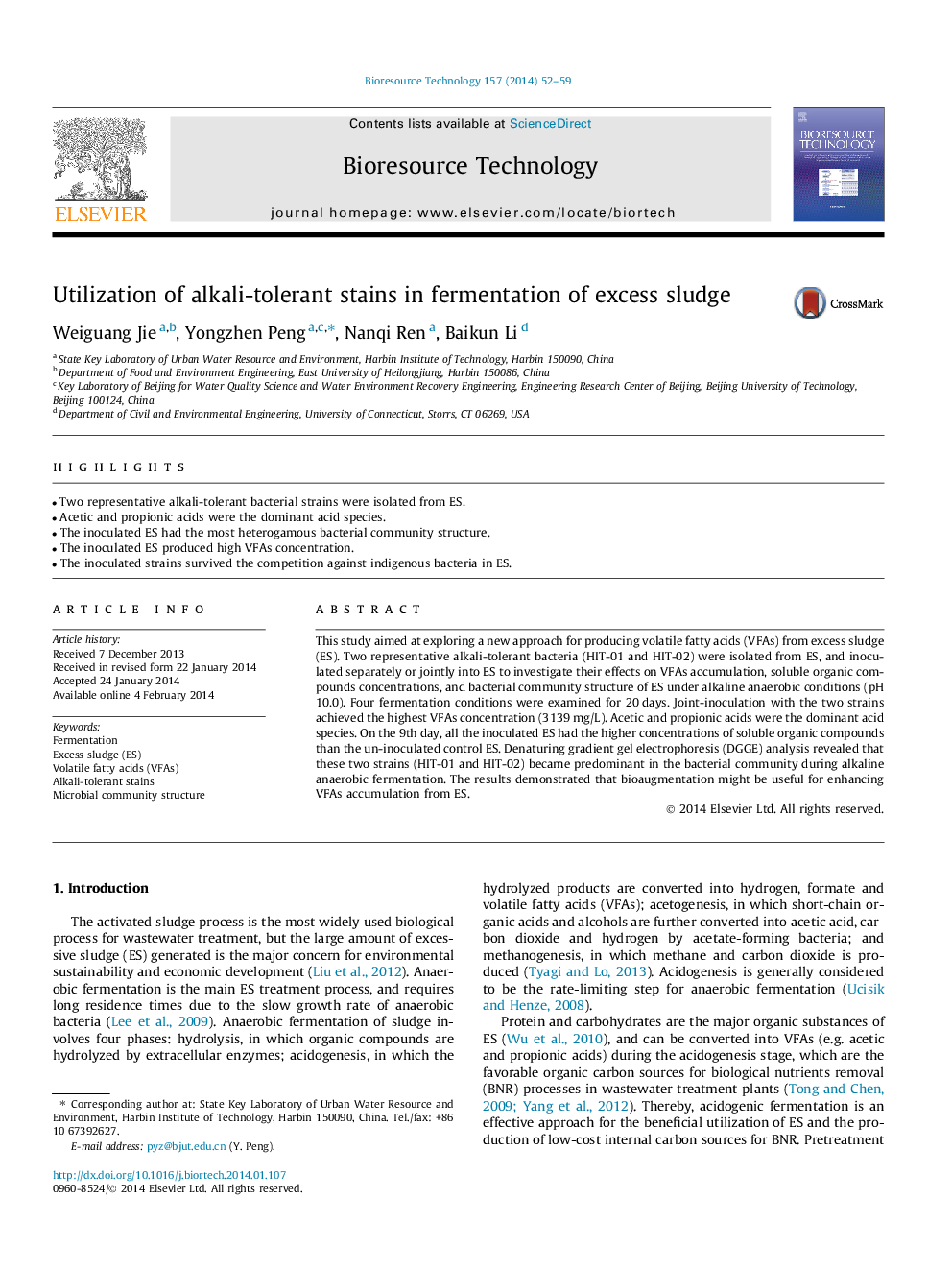| Article ID | Journal | Published Year | Pages | File Type |
|---|---|---|---|---|
| 680930 | Bioresource Technology | 2014 | 8 Pages |
•Two representative alkali-tolerant bacterial strains were isolated from ES.•Acetic and propionic acids were the dominant acid species.•The inoculated ES had the most heterogamous bacterial community structure.•The inoculated ES produced high VFAs concentration.•The inoculated strains survived the competition against indigenous bacteria in ES.
This study aimed at exploring a new approach for producing volatile fatty acids (VFAs) from excess sludge (ES). Two representative alkali-tolerant bacteria (HIT-01 and HIT-02) were isolated from ES, and inoculated separately or jointly into ES to investigate their effects on VFAs accumulation, soluble organic compounds concentrations, and bacterial community structure of ES under alkaline anaerobic conditions (pH 10.0). Four fermentation conditions were examined for 20 days. Joint-inoculation with the two strains achieved the highest VFAs concentration (3139 mg/L). Acetic and propionic acids were the dominant acid species. On the 9th day, all the inoculated ES had the higher concentrations of soluble organic compounds than the un-inoculated control ES. Denaturing gradient gel electrophoresis (DGGE) analysis revealed that these two strains (HIT-01 and HIT-02) became predominant in the bacterial community during alkaline anaerobic fermentation. The results demonstrated that bioaugmentation might be useful for enhancing VFAs accumulation from ES.
